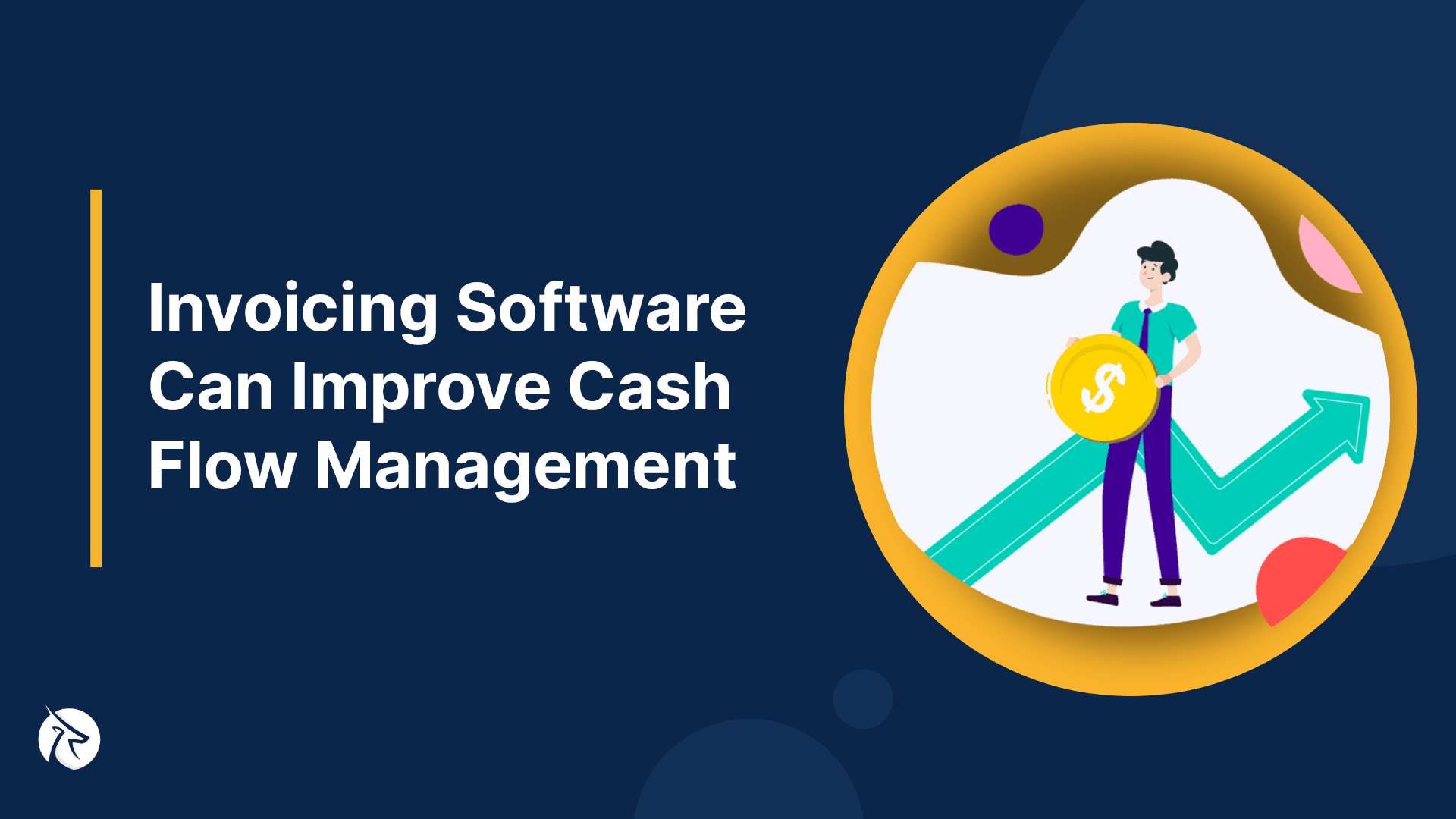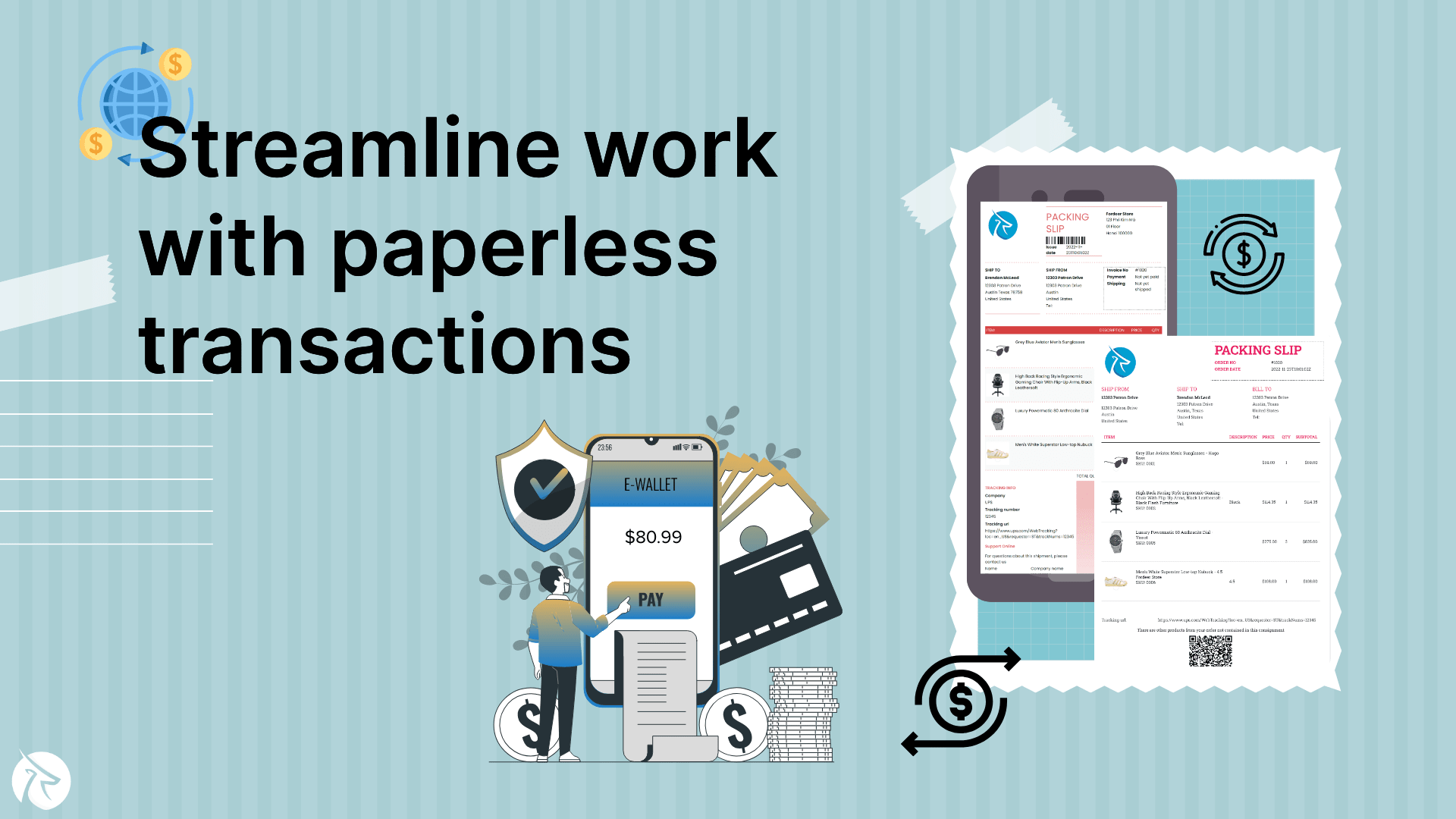How invoicing software can improve cash flow management

Are you familiar with the concept of a company's cash flow and how it impacts its operational efficiency? It essentially revolves around the movement of money in and out of a business, encompassing cash outflow, cash inflow, and the manner in which a company handles these financial transactions.
This, in turn, has a direct bearing on the overall financial well-being of the organization. In the realm of evolving business management practices, maintaining firm control over a company's finances holds immense significance.
Introducing online invoicing software, a transformative tool that has redefined the landscape of invoicing processes and, consequently, has elevated the management of cash flow. In this article, Fordeer will provide a comprehensive exploration of how businesses are leveraging the capabilities of online invoicing software to optimize their cash flow management strategies.
Understanding Cash Flow
Cash flow represents the monetary movement within a business or organization, encompassing the inflow and outflow of funds over a specific timeframe. It comprises cash and easily convertible assets, known as cash equivalents. This financial flow is determined by three fundamental elements: income, expenses, and timing.
Income embodies all earnings generated from a company's revenue streams, while expenses encompass the various costs incurred in the day-to-day operation and management of the business. Timing pertains to the synchronization between the receipt of income and the obligations of expenses.
Effective cash flow management serves as a critical mechanism to ensure that a business maintains the necessary financial resources for debt repayment, settlement of accounts payable, and investments in strategic growth endeavours.
Furthermore, it furnishes businesses with valuable insights into their financial health, facilitating informed decisions on matters such as expansion, investment, or operational adjustments. In the absence of sound cash flow management, businesses may encounter a range of challenges that impede their operations and hinder their potential for growth.
Business Cash Flow Challenges
Businesses often grapple with substantial cash flow challenges, which commonly manifest as diminished sales and revenue, hurdles in collecting outstanding debts, restricted capital reserves, heightened financial risks, and, most notably, the looming spectre of insolvency. These impediments can inflict severe harm on a business's day-to-day functioning, impeding its potential for growth and placing strain on relationships with suppliers and vendors.
Benefits of Effective Cash Flow Management
The advantages of implementing robust cash flow management practices, particularly through the utilization of online invoicing software, are manifold. These measures not only bolster financial stability but also contribute to enhanced financial security, equipping businesses to navigate unforeseen circumstances with greater ease and resilience. Moreover, the presence of a stable cash flow serves as a catalyst for businesses to capitalize on expansion prospects and cultivate more robust relationships with suppliers, thereby laying the foundation for future business growth and collaboration.
Benefits of Invoicing Software to Business’s Cash Flow
Streamlined Invoicing: Invoicing software streamlines the invoicing process, saving time and reducing the risk of errors. It ensures timely and accurate invoice delivery, minimizing payment delays. With automated invoicing, you can effortlessly create and send invoices, freeing up valuable time for core business activities.
Accelerated Payments: Invoicing software facilitates faster payments through automated payment reminders and follow-up options. Automatic reminders prevent payment oversights, and follow-up messages expedite payment collection. These features help maintain a healthy cash flow by ensuring that payments are received promptly.
Enhanced Accuracy: Invoicing software enhances invoice accuracy by automating calculations of amounts and tax rates. This reduces errors and eliminates the need for manual calculations, preventing payment disputes. Accurate invoices inspire customer trust and reduce the likelihood of payment delays or legal issues.
Improved Record Keeping: Invoicing software offers superior invoice and payment tracking capabilities. Users can easily access payment histories, outstanding invoices, and due dates, simplifying overdue payment identification and collection efforts. Efficient record-keeping ensures that no payment slips through the cracks.
Time Efficiency: Invoicing software saves substantial time, allowing businesses to concentrate on core activities. Automation of invoicing processes frees up resources, enabling businesses to focus on growth and development. By automating repetitive tasks, you can dedicate more time to strategic initiatives.
Real-Time Insights: Invoicing software provides real-time reporting, offering a quick overview of cash flow. Users can promptly identify and address cash flow issues, gain valuable business insights, and make informed financial decisions. Real-time data empowers businesses to adapt and optimize their financial strategies as needed.
Seamless Integration: Invoicing software seamlessly integrates with various business tools, such as accounting, project management, and CRM software, streamlining financial and operational management within a unified platform. This integration ensures that all aspects of your business are interconnected and efficiently managed, further enhancing cash flow optimization.
Strategies for optimizing cash flow through effective invoice management
Digitize and Automate Your Invoices
Traditional paper-based invoicing methods, including the use of checks and Excel spreadsheets, remain prevalent in the business world, even though they are time-consuming and prone to errors. These outdated practices lead to delays in customer payments and negatively impact cash flow.
Fortunately, there are free invoicing software tools such as Wave, Stripe, and Kiot Viet designed for small to mid-sized businesses. These solutions automate the invoicing process, resulting in faster invoice delivery, error detection, and timely reminders to customers about payment deadlines.
Moreover, digital invoicing and payment options enhance convenience for customers, ultimately speeding up payment processing. Many of these invoice management tools offer dashboards and metrics, simplifying invoice tracking and facilitating sound financial decision-making.
Build an Invoice Template
Invoicing software typically offers the ability to create invoice templates, which play a crucial role in reducing payment delays stemming from mistakes and misunderstandings. These templates ensure consistency in the information presented on each invoice, including customer details, invoice amount, invoice number, payment terms, and service descriptions.
It's essential to customize templates to suit your specific business needs since different clients may require unique formats based on negotiated terms or services. Additionally, well-designed templates should present vital information in a clear and easily understandable manner, potentially incorporating brand elements like your business logo, colours, and fonts.
Clients are more inclined to make prompt payments when they can quickly interpret invoice content and recognize your business as a reliable supplier.
Establish Payment Terms Proactively
Introducing payment terms for the first time on your initial invoice can lead to payment delays and strained client relationships. It is advisable to agree upon payment terms with customers before commencing any work, ensuring clarity regarding when payments are expected. During this negotiation stage, you can explore the possibility of shorter payment terms or early payment discounts to enhance your cash flow.
Many businesses also define terms for late payments, including late payment fees or procedures in the event of customer default. When establishing payment terms, it's beneficial to specify the intended recipient of the invoice, as addressing it to an entire accounts payable department may lead to delays if manual redirection to the correct individual is necessary.
Time Your Invoices Strategically
Strategic timing of customer payments significantly influences cash flow management and can be achieved through both payment terms and internal processes. For instance, if you have a long-term customer contract, negotiating monthly instalments and recurring invoices can provide a steady stream of working capital throughout the project's duration. On your end, there are additional strategies to optimize invoice timing.
Employ invoice management software to automatically dispatch invoices upon service completion. In cases where automation is not used, schedule a dedicated time and set reminders for prompt invoice preparation and delivery.
Furthermore, consider sending invoices at strategic times when your customers are more likely to open emails and make payments. Email marketing experts commonly recommend sending emails during midweek or midday hours to capture recipients' attention effectively.
Maintain a Close Watch Over Your Accounts Receivable
A well-crafted invoicing strategy doesn't conclude upon the issuance of an invoice; it extends to the post-invoicing phase and how your business handles it. A critical aspect of this ongoing process involves consistently monitoring your company's accounts receivable.
This practice is essential to prevent potential bad debt expenses and to ensure a steady and reliable cash flow that can adequately support your day-to-day operational activities.
By keeping a vigilant eye on your accounts receivable, you gain valuable insights into your customers' payment behaviours. This insight allows you to predict when future payments are likely to be received, aiding in making more informed financial decisions. Additionally, it helps you effectively track any payments that become overdue, facilitating prompt follow-up actions.
Furthermore, the practice of closely monitoring accounts receivable provides your company with specific perspectives on areas that may require improvements within your invoicing strategy.
For example, if you frequently encounter issues with late invoice payments, your business might explore opportunities to collaborate with buyers who offer early payment programs. These programs can provide real-time visibility into your outstanding invoices, making it easier to manage and monitor your receivables effectively.
Harness the Power of Customer-Supported Invoicing Tools
While not all accounting software systems automatically update in real-time when customers settle their invoices, your business may already possess a convenient and efficient solution if your clients utilize the Pay Early platform. The Early Payment Program, offered as a working capital solution, empowers you to proactively request early payment from your customers in exchange for a modest discount.
This program goes a step further by employing a dynamic discount model that affords you increased control over your cash flow. You have the flexibility to decide which specific invoices you want to accelerate for early payment, as well as determine the discount rate associated with these accelerated payments.
This strategic approach to invoicing not only ensures timely payments but also optimizes your cash flow management, enhancing your financial stability and operational capabilities.
Summary
In conclusion, invoicing software plays a pivotal role in bolstering cash flow management. Challenges like delayed payments, unexpected expenses, and seasonal fluctuations can be expertly navigated with efficient invoicing practices. Timely and systematic invoicing, clear payment terms, and real-time tracking are essential.
Invoicing software also aids in accurate financial forecasting and strategic cash flow optimization. This technology empowers businesses to proactively manage their finances, allocate resources wisely, and ensure a resilient financial foundation for growth and stability in today's dynamic business landscape.











